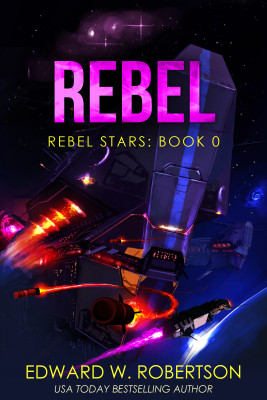Challenging Assumptions
This is the first in a sporadic series of posts examining the publishing market, specifically as it relates to self-publishing. To start things off, I want to look at pricing, and present an ass-backwards case: that it may make more sense to price your oldest, least popular books the highest—and your new books the lowest.
Traditionally, a book is priced highest when it’s brand new. Part of this is due to the formats of a new release itself, which begin with expensive hardcovers and later move on to less expensive paperbacks, but this is frequently how ebooks are treated, too.
For instance, Stephen King’s most recent book Doctor Sleep is currently $10.99. Take a look at his backlist, however, and it’s pretty much all priced lower—mostly $5.99-7.99, with a more recent and enduring book (11/22/63) leading the way at $9.99, and running all the way down to $3.99 (The Shining, currently price-dropped to promote the new sequel Doctor Sleep).
There’s no difference in production costs for an ebook sold today and a copy of that same ebook sold on the day the title came out. So why does it cost less now than when it was new?
The answer is demand. When an author puts out a new book, there is a high level of fan demand for that title. Everyone knows you’ll be able to get it for cheaper later. But so long as the price is semi-reasonable, readers don’t care about shelling out a few extra dollars in exchange for having the specific book they want now. And publishers are happy to take advantage of that demand by setting initial prices higher.
Why reduce price of that same ebook format later? I don’t get invited to sit around a lot of Big Publishing House marketing meetings, but the probable answer is obvious. As demand wanes, you cut price, hoping to lure in new readers. Especially the segments of the market that are more price-sensitive. Over time, as a book steps down the pricing staircase, it drops below the purchase threshold of several different markets, garnering new purchases at every step of the way. Eventually, once the higher-paying markets are exhausted and demand settles down to a trickle, you slot the book into a low price—one that minimizes readers’ resistance to purchase, but isn’t so low that it devalues the author and/or the publisher’s entire catalogue.
That’s the traditional model. It makes a lot of sense. Maximize initial revenues by taking advantage of pent-up demand, then lower prices to draw new readers into the backlist (and, hopefully, convert them into fans who’ll then go on to buy frontlist).
The self-publishing/indie approach is way more fragmented, with different people trying all kinds of different things, but I think the general approach is similar: release a new book at full price, or at a slight discount, let it fade into backlist, then run sales on backlist titles to goose new releases and/or the rest of the backlist.
This makes sense, too. I don’t think it’s a bad approach in the slightest. But I think there is a stark difference between the pre-digital publishing market and the current market. Back in the day, you counted on audience growth through word-of-mouth, right? People still treat word-of-mouth like your #1 weapon for growth from book to book.
Well, I think that’s been replaced. Overshadowed, at least. By visibility.
Yay, a buzzword! That’s how you know this must be smart. To explain this particular use of “visibility,” it’s time to dissect Amazon’s recommendation engine.
When a new book is released on Amazon—and the other stores, too, but Amazon is the one I’m most familiar with, and the one I believe does this best—its resulting sales aren’t just about the pent-up demand waiting for it. Instead, Amazon’s bots process its initial sales, then actively promotes that title to other customers likely to purchase it.
This is largely black box stuff accomplished through emails and on-site recommendations, so it’s hard to capture hard data on these processes. But I’m guessing Amazon’s system is a lot like Netflix, where people who watched/enjoyed Movie A, B, and C will be recommended Movie D, which other people who enjoyed A-C also watched and liked. Amazon has their own version of this front and center, the “alsobot” recommendations on every single product page.
So a new book comes out. Its fans buy it. And then the mighty Algorithm kicks in, recommending the book to potential customers. The people it recommends the book to are (probably) determined by taste-constellations, i.e. the people Amazon’s system thinks are most likely to buy it. And the volume of those recommendations is determined by the volume of outside sales—anything not initially generated by Amazon itself.
The recommendation algorithms are highly adaptive. Both the targeting and the volume of that targeting are influenced by the book’s performance when Amazon puts it in front of potential customers. The better a book converts potential customers to actual purchases, the more the algos ramp up the juice. The worse it does, the more the juice dries up. (For the record, I make no judgments here about a book’s literary quality—just its commercial potential, as predicted and then tested by Amazon.)
For a brief foray into concrete examples, last month, I released a new book. I was able to push about 250 sales through my own devices. Over the course of the month, it saw “organic” algo-driven growth, and finished September with about 1950 sales. Thanks to Amazon’s marketing, it sold 8x as many copies in its first month than I conjured up on my own.
For anyone who spends any time on Amazon, this general process is obvious. But look at what’s happening here: Amazon’s sophisticated recommendation system is identifying potential customers and then pushing something they’re likely to buy right in front of them.
In other words, they’ve slashed a huge shortcut through word-of-mouth. They have replicated an organic process that used to take weeks, months, or years to really kick in, and condensed it to a matter of days.
I’ve got one bit of data to help approach this, though. In my observation and experience—anecdote alert!—given equal visibility, a book priced at $0.99 will sell roughly 2x as many copies as one priced at $2.99. This is in SF/F; in particularly price-sensitive genres, like New Adult and possibly Romance, the difference may be higher, maybe as high as 3x.
Working from a 2x figure, though, let’s crunch some numbers. Say you have the option of 1000 sales in your first month at $2.99 or 2000 sales at $0.99. $2.99 earns 70% royalties—$2100, in this hypothetical. $0.99 earns 35%—$700. That is a huge difference, one that I have no doubt Amazon intentionally laid out to create a soft floor for ebook prices.
But let’s say you can convert 1 out of every 20 purchases into core fans, people who’ll happily sign up for your mailing list/Facebook page/blog so you can reach them directly when the next book is out. At $2.99, you’ve added 50 core readers. At $0.99, you’ve added 100. Your next book will have twice as many purchases to impress the recommendation algos with than if you’d launched the previous book at $2.99. Multiply by as many books as you intend to write in the series.
Caveats here, of course. A few of the people who signed up for $0.99 books may not buy a sequel at $2.99. And conversion rate naturally degrades the deeper you get into a series. And a 20:1 purchase:signup ratio is generally too high (though it doesn’t really matter what the absolute ratio is, it’s more about the relative ratio of sales between $2.99 and $0.99).
So you can downplay this idea a little bit. Even so, the long-term implications of launching cheap are pretty interesting. And obviously there are more ways to look at this besides $0.99 vs. $2.99. Such as this:
This is from Smashwords’ yearly survey on self-publishing trends. The first thing you’ll note is that it directly contradicts what I claimed above about a title selling twice as much at $0.99 vs. when it’s priced at $2.99. So it’s kind of hilarious that I’m going to use other parts of the data to make a point. But whatever, apply the salt grains as necessary. This Smashwords survey isn’t an apples-to-apples comparison. It’s looking at sales across its entire catalogue, not just at the difference in sales volume when a specific book with constant, equal visibility is switched between different prices.
Anyway, that’s outside what I want to look at here, which is that big ol’ hump in unit sales for books priced $2.99-3.99, the slope between $4.99-6.99, and that floor at $7.99+.
If this data is trustworthy, you can use it to explore the various mini-markets of the overall ebook market. For many people, up to $3.99 is a bargain, an impulse purchase. Another smaller segment doesn’t think much of paying up to $6.99 for an ebook. Move to $7.99+, and you’re at frontlist prices. There’s no bargain at all.
Thus I think there’s a pretty crazy case for punting new books out the door at $3.99, max. Even if you’re an indie and you don’t charge much to begin with—few of us go higher than $4.99—just a small initial discount could pay off.
Whatever the case, applying traditional frontlist prices to new releases maximizes earnings from preexisting fans, but drastically reduces your ability to create new fans. Not just over the long-term, but during the short-term recommendation-driven visibility Amazon will grant you as a new release.
That by itself is a strong argument for inverting the traditional pricing structure. On top of that, you’re actually rewarding your existing fans for their loyalty by charging them less than the book’s eventual list price. Treat your readers well, and they’re more likely to stick around for the future. Yay, a lasting career.
I know there are a lot of good arguments against this general premise. Particularly in series, where you can put out new releases at whatever price you want and use the visibility of the new release to push potential readers toward the (bargain-priced!) beginning of the series. Even so, I think it’s worth thinking about. Particularly for standalones and the beginning of a new series, launching at a lower price than your “list” might be the best move.
About Me
Archives
Featured Books
Rebel
In the early 21st century, an alien attack drove humanity to the brink of extinction. A thousand years after their defeat, the aliens haven't been seen...
More info →My Book Genres
- Fantasy (5)
- Science Fiction (16)
My Book Series
- Breakers (11)
- Rebel Stars (3)
- The Cycle of Arawn (4)
- The Cycle of Galand (1)






